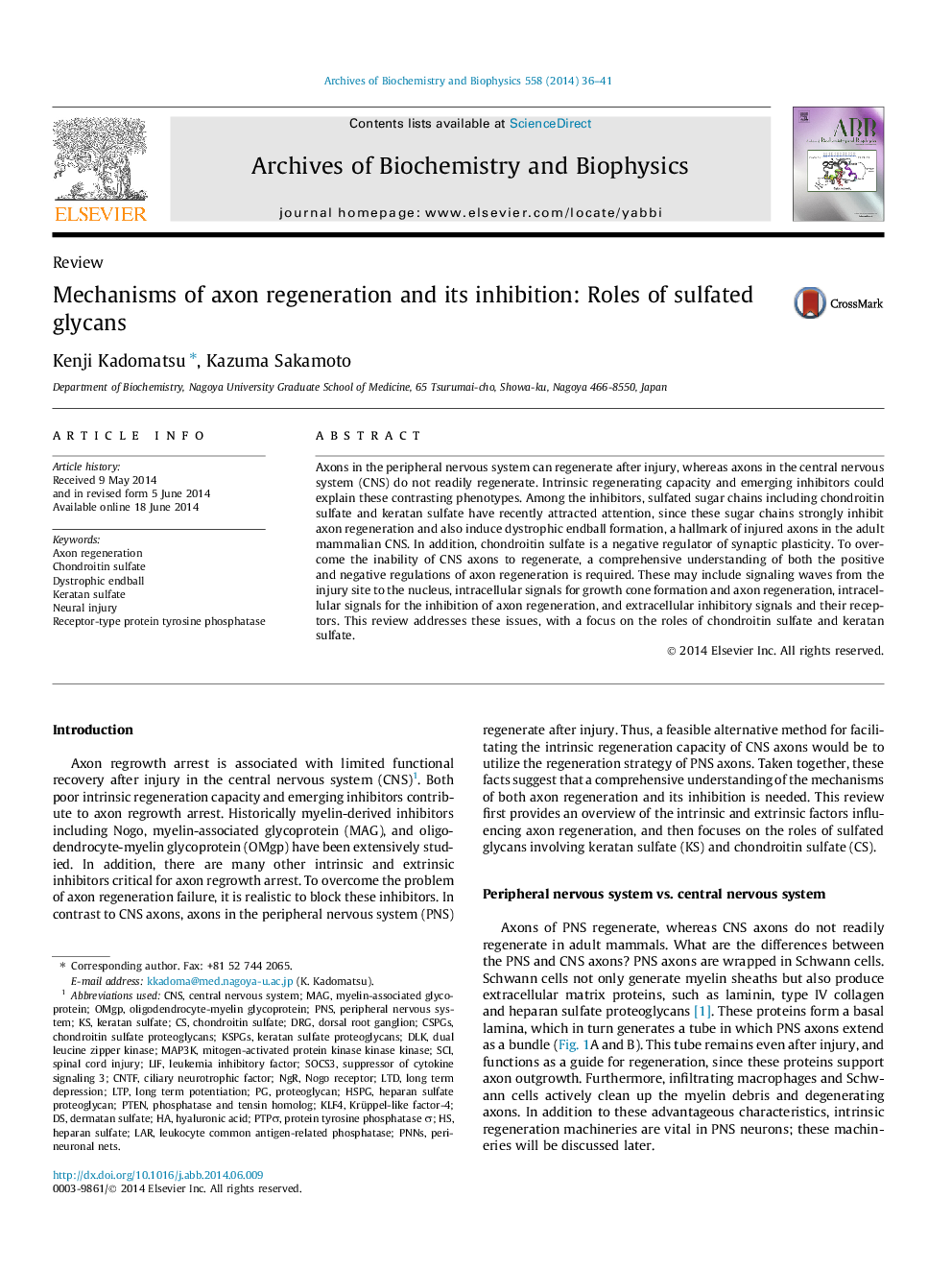| Article ID | Journal | Published Year | Pages | File Type |
|---|---|---|---|---|
| 8290161 | Archives of Biochemistry and Biophysics | 2014 | 6 Pages |
Abstract
Axons in the peripheral nervous system can regenerate after injury, whereas axons in the central nervous system (CNS) do not readily regenerate. Intrinsic regenerating capacity and emerging inhibitors could explain these contrasting phenotypes. Among the inhibitors, sulfated sugar chains including chondroitin sulfate and keratan sulfate have recently attracted attention, since these sugar chains strongly inhibit axon regeneration and also induce dystrophic endball formation, a hallmark of injured axons in the adult mammalian CNS. In addition, chondroitin sulfate is a negative regulator of synaptic plasticity. To overcome the inability of CNS axons to regenerate, a comprehensive understanding of both the positive and negative regulations of axon regeneration is required. These may include signaling waves from the injury site to the nucleus, intracellular signals for growth cone formation and axon regeneration, intracellular signals for the inhibition of axon regeneration, and extracellular inhibitory signals and their receptors. This review addresses these issues, with a focus on the roles of chondroitin sulfate and keratan sulfate.
Keywords
Related Topics
Life Sciences
Biochemistry, Genetics and Molecular Biology
Biochemistry
Authors
Kenji Kadomatsu, Kazuma Sakamoto,
